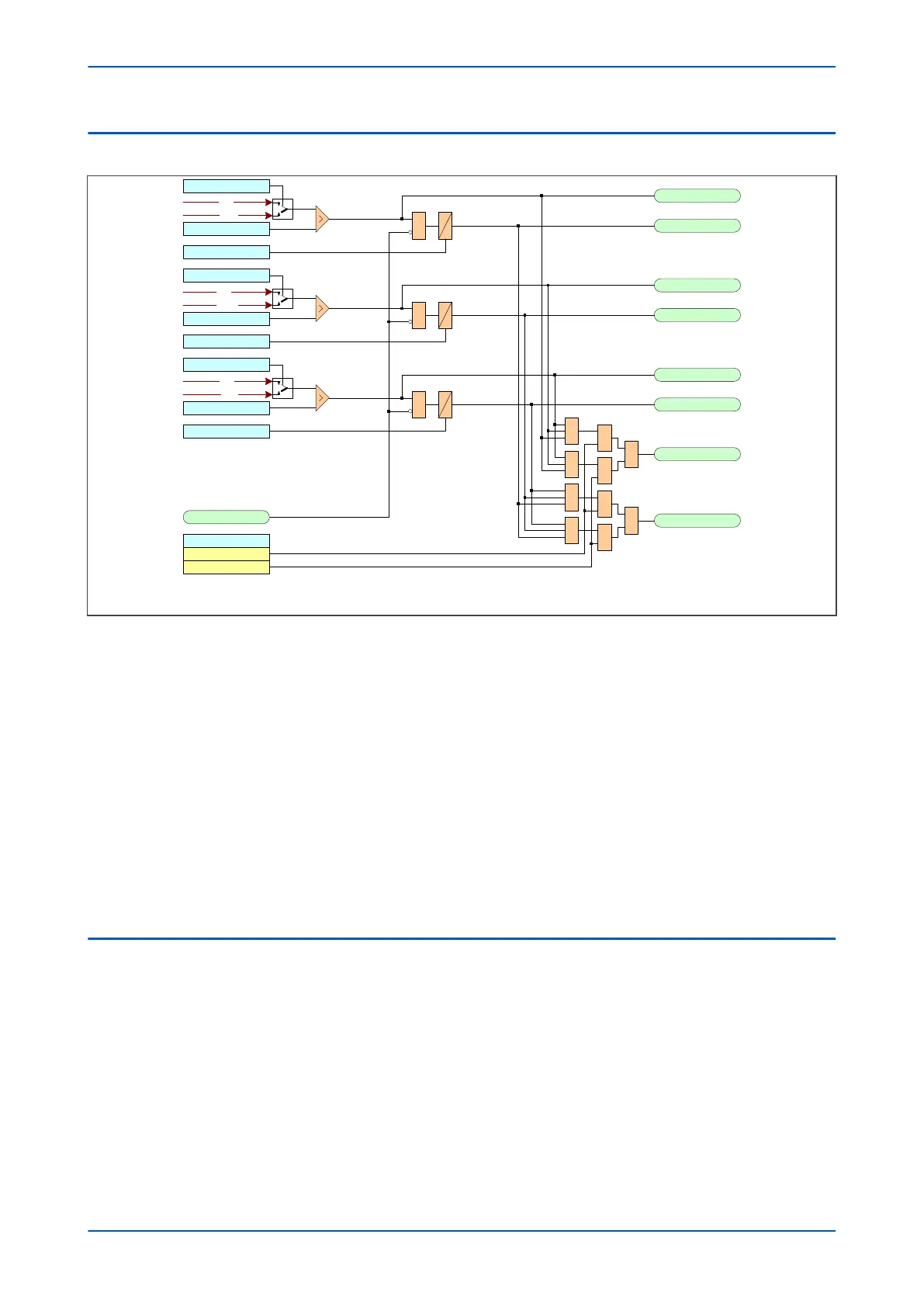3.2 OVERVOLTAGE PROTECTION LOGIC
V00804
VA
V>1 Voltage Set
V>1 Time Delay
V >1 Trip A/AB
V>1 Start A/AB
&
1
&
&
&
1
&
&
1
1
V>1 Start
V>1 Trip
V> Operate mode
Any Phase
Three Phase
V> Measur't Mode
VAB
&
VB
V>1 Voltage Set
V>1 Time Delay
V>1 Trip B/BC
V>1 Start B/BC
V> Measur't Mode
VBC
&
VC
V>1 Voltage Set
V>1 Time Delay
V>1 Trip C/CA
V>1 Start C/CA
V> Measur't Mode
VCA
&
V>1 Timer Block
Notes: This diagram does not show all stages . Other stages follow similar principles.
VTS Fast Block only applies for directional models .
Figure 111: Overvoltage - single and three phase tripping mode (single stage)
The O
vervoltage protection function detects when the voltage magnitude for a certain stage exceeds a set
threshold. If this happens a Start signal, signifying the "Start of protection", is produced. This Start signal can be
blocked by the VTS Fast Block signal. This start signal is applied to the timer module to produce the Trip signal,
which can be blocked by the overvoltage timer block signal (V>(n) Timer Block). For each stage, there are three
Phase overvoltage detection modules, one for each phase. The three Start signals from each of these phases are
OR'd together to create a 3-phase Start signal (V>(n) Start), which can then be activated when any of the three
phases start (Any Phase), or when all three phases start (Three Phase), depending on the chosen V> Operate Mode
setting.
The outputs of the timer modules are the trip signals which are used to drive the tripping output relay. These
tripping signals are also OR'd together to create a 3-phase Trip signal, which are also controlled by the V> Operate
Mode setting.
If any one of the above signals is low, or goes low before the timer has counted out, the timer module is inhibited
(effectively reset) until the blocking signal goes high.
3.3 APPLICATION NOTES
3.3.1 OVERVOLTAGE SETTING GUIDELINES
The provision of multiple stages and their respective operating characteristics allows for a number of possible
applications:
● Definite Time can be used for both stages to pr
ovide the required alarm and trip stages.
● Use of the IDMT characteristic allows grading of the time delay according to the severity of the overvoltage.
As the voltage settings for both of the stages are independent, the second stage could then be set lower
than the first to provide a time-delayed alarm stage.
● If only one stage of overvoltage protection is required, or if the element is required to provide an alarm only,
the remaining stage may be disabled.
Chapter 11 - Voltage Protection Functions P64x
242 P64x-TM-EN-1.3

